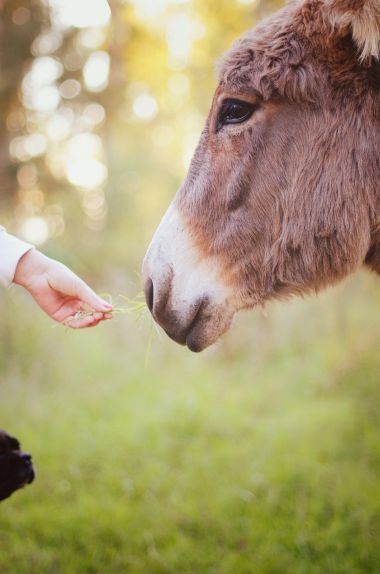When a step of faith needs courage

One day I took courage from a donkey.
It was a very special donkey - cast in bronze and placed at the Pukehau National War Memorial Park in Wellington. This donkey is also known as a donkey ambulance and the Anzac donkey.
I often climbed the marble steps in my lunch break to visit the donkey sculpture. I would contemplate the donkey's life in WWI ferrying wounded soldiers from the Gallipoli battlefields to safety. I had never considered animals and their part in the war effort before.
The memorial plaque read this soldier and his donkey had evacuated the wounded from the front line down shrapnel valley and became a symbol of all stretcher bearers. There is also a New Zealand war animal memorial at the National Army Museum in Waiouru.
I wondered what it must have been like for them serving in this bleak, violent and deafening environment. The sculpture titled "Man with a donkey" to me portrayed the donkey's loyal service to man, and bravery as a vulnerable animal in the war effort.
According to the Donkey and Mule Protection Trust in New Zealand, donkeys survive because they don't outwardly show fear or stress. In the face of danger, the donkey freezes disconcerting its predator. Donkeys are also social and group animals and if one of them has an accident the others stay with him.
This Kiwi soldier, Richard Henderson, and his humble donkey friend Murphy touched me. The story goes on that Murphy was commandeered from the supply chain to become a donkey ambulance by Australian John Simpson and following his death was taken over by Richard.
God's guidance
Then one day just as I was about to make a critical life decision I felt compelled to visit this statue once again. The decision I was about to make involved turning down a job offer, and healthy salary, to follow a desire of my heart – writing.
I prayed all week about confirmation for my next step.
As I stood by the statue and read the words 'courage', I felt God was gently saying he wanted me to be brave and follow the direction of my heart, trust him and walk in faith.
The next day I rejected the job, purchased a laptop, took a deep breath and boldly stepped out.
More than a hundred years later God used this moving sculpture of a courageous man and donkey to give me courage to start my new journey.
Memorial history
Called The Man with the Donkey by Paul Walshe, the sculpture is a memorial to all medical personnel, stretcher bearers and ambulance drivers who served alongside New Zealand troops in wartime.
The plaque on the side of the memorial titled Simpson and Henderson reads: "At Gallipoli in 1915 John Simpson Kirkpatrick, who served with the Australian Forces, commandeered a local donkey and named it "Murphy." Simpson, as he was known evacuated the wounded from the front line down shrapnel valley and became a symbol of all stretcher bearers. Simpson was killed on 19 May 1915.
"Private Richard Alexander (Dick Henderson), New Zealand Medical Corps, together with others, continued the donkey ambulance work. Unlike his Australian counterpart, Henderson survived the Gallipoli campaign and went on to serve in France."











